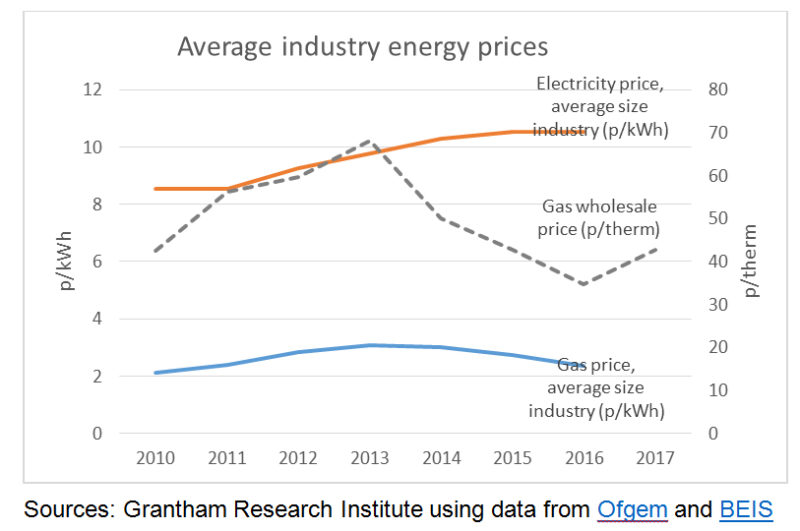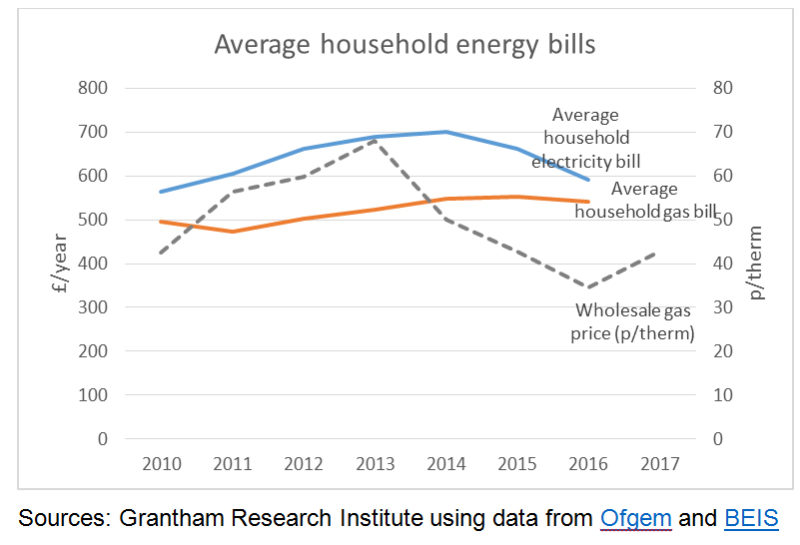What are gas prices in the UK and how do they affect bills?
1. What are current gas prices in the UK?
UK wholesale gas prices have been increasing since the early 2000s, due to upward pressure on prices in Europe and the decline in the UK’s continental shelf gas production. However, prices began to fall from the start of 2014.
After reaching a low of 28 pence per therm in September 2016 (one therm is about 2.64 cubic metres of natural gas), in 2017 prices fluctuated between 35 and 53 pence per therm.
Gas prices for industry vary significantly depending on energy consumption. On average, between 2015 and 2016 in real terms the price of gas including the Climate Change Levy decreased by about 14 per cent, and the price of electricity remained stable. (The Climate Change Levy is an environmental tax on commercial energy use.)

2. How are gas prices reflected in household energy bills?
In response to the changes in wholesale prices, the six major UK energy suppliers dropped the prices they charge to domestic consumers in early 2016. These fell by 2.5 per cent from 2015–16. As a result, the average 2016 household gas bill was £650 in real terms, £72 (10.6 per cent) less than a year earlier.
As a large portion of electricity in the UK is obtained by burning gas (41.3 per cent in 2017), changes in gas prices affect also the electricity price. The cost of the fuel used for generation accounts for around 36 per cent of domestic electricity bills. The average 2016 electricity bill was £541 in real terms, a slight decrease of £9 from the previous year (-1.5 per cent).

Updated: December 2017

